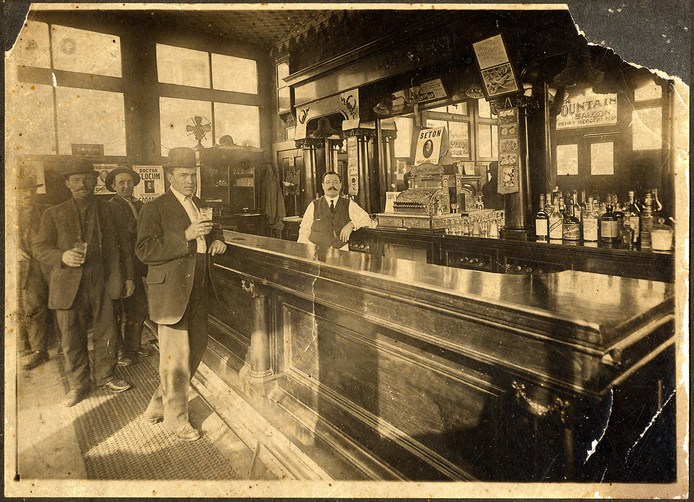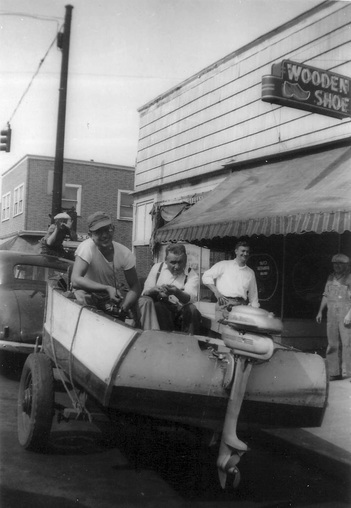Community > Businesses > Saloons and Taverns
Saloons and Taverns
Drinking establishments were sprinkled throughout the Albina neighborhood, and many people took advantage of these places to socialize and relax.
Before Prohibition, the tavern or saloon was primarily a male stronghold. They were places where people talked politics, about their lives and problems, and simple things like the weather. Men could have a congenial time as they stood at the bar (stools did not come into use until after Prohibition).
Before Prohibition, the tavern or saloon was primarily a male stronghold. They were places where people talked politics, about their lives and problems, and simple things like the weather. Men could have a congenial time as they stood at the bar (stools did not come into use until after Prohibition).
Prohibition was not well received by many Volga Germans. Elder Peter Yost of the Free Evangelical Brethren Church reportedly gave his most popular sermon, stating that "food" (beer) was being taken away from the German people. Most Volga Germans made their own beer during Prohibition from Blue Ribbon Brew - a special brewing malt barley. Officials tolerated this practice unless someone tried to sell their homebrew. Some local Volga German grocery stores sold bootlegged whiskey behind the counter that was delivered in a sack.
The bars were usually ornate and made of wood with a gilt-edged mirror in the center. Some of the furnishings came around the Horn from cities on the East Coast or Europe. The back bar was made of shelves that held bottles and glassware. Typically, there were also murals and beer advertisements on the walls. Hidden under the bar were bottles and kegs of beer that were kept cool on beds of ice. Beer was drawn from the kegs by simple or sometimes ornate brass pressure taps or by a gravity faucet inserted directly in the keg.
The saloon keeper kept a watchful eye on glasses and mugs to ensure they stayed full. He was a friend, confidant, and advisor to his customers. Many saloon keepers could brighten the room with humor and tall tales that entertained the customers.
Over time, women began enjoying beer at the local establishments, just like their male counterparts.
In many families, it was common for a father or mother who wanted to enjoy a beer with dinner to send a young child to the tavern or saloon with a tin pale. The pale would be filled by the saloon keeper and then transported home by the child, careful not to spill a drop. Beer pails (usually 2 or 4-quart lard buckets) were common in kitchens before 1900.
The bars were usually ornate and made of wood with a gilt-edged mirror in the center. Some of the furnishings came around the Horn from cities on the East Coast or Europe. The back bar was made of shelves that held bottles and glassware. Typically, there were also murals and beer advertisements on the walls. Hidden under the bar were bottles and kegs of beer that were kept cool on beds of ice. Beer was drawn from the kegs by simple or sometimes ornate brass pressure taps or by a gravity faucet inserted directly in the keg.
The saloon keeper kept a watchful eye on glasses and mugs to ensure they stayed full. He was a friend, confidant, and advisor to his customers. Many saloon keepers could brighten the room with humor and tall tales that entertained the customers.
Over time, women began enjoying beer at the local establishments, just like their male counterparts.
In many families, it was common for a father or mother who wanted to enjoy a beer with dinner to send a young child to the tavern or saloon with a tin pale. The pale would be filled by the saloon keeper and then transported home by the child, careful not to spill a drop. Beer pails (usually 2 or 4-quart lard buckets) were common in kitchens before 1900.
|
Last updated October 27, 2023
|
Several saloons and taverns owned by Volga Germans were sprinkled through the neighborhoods:
Read Taverns in the Neighborhood by Roy Conrad Derring. Bier ist nicht die Antwort |

